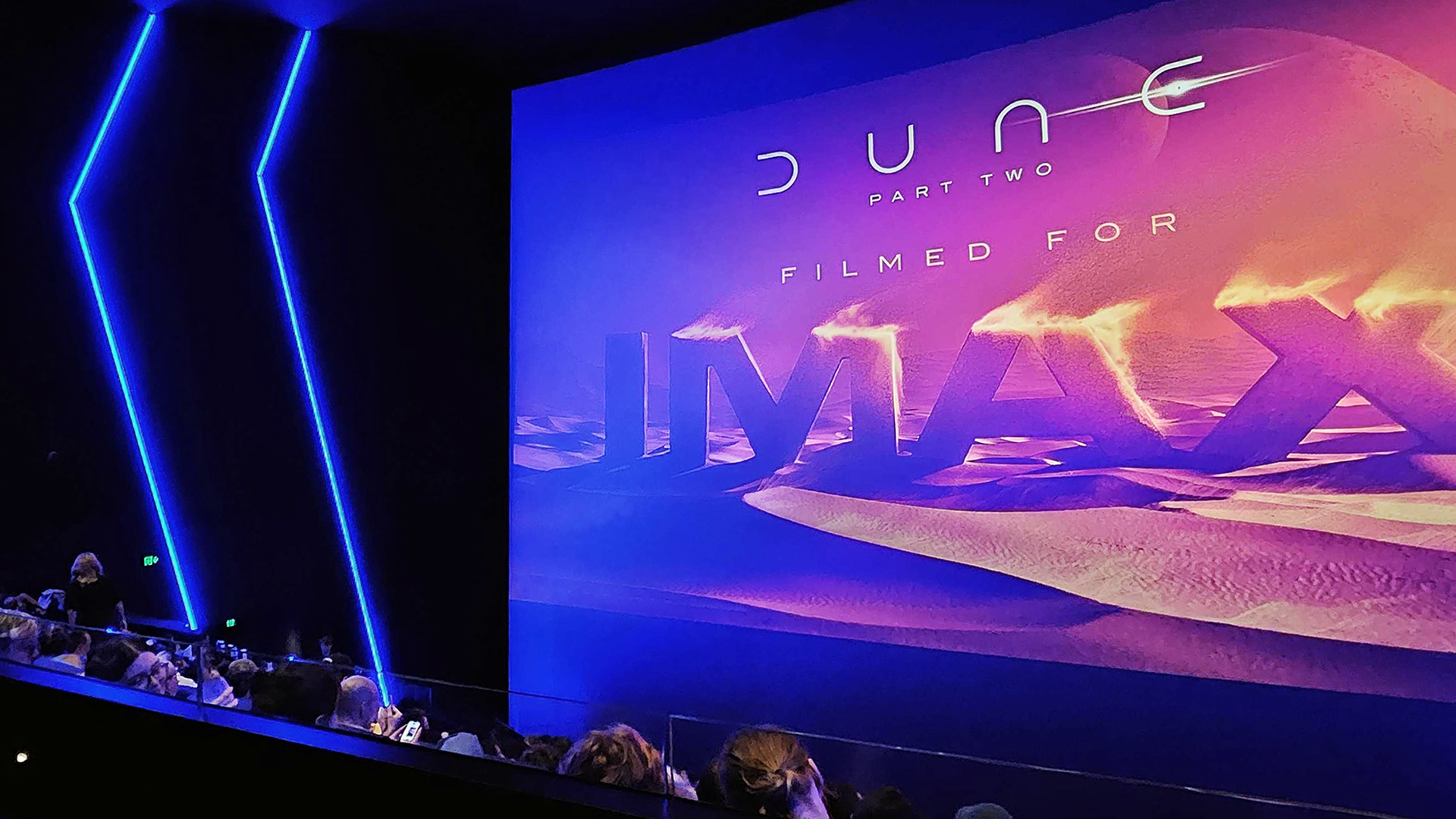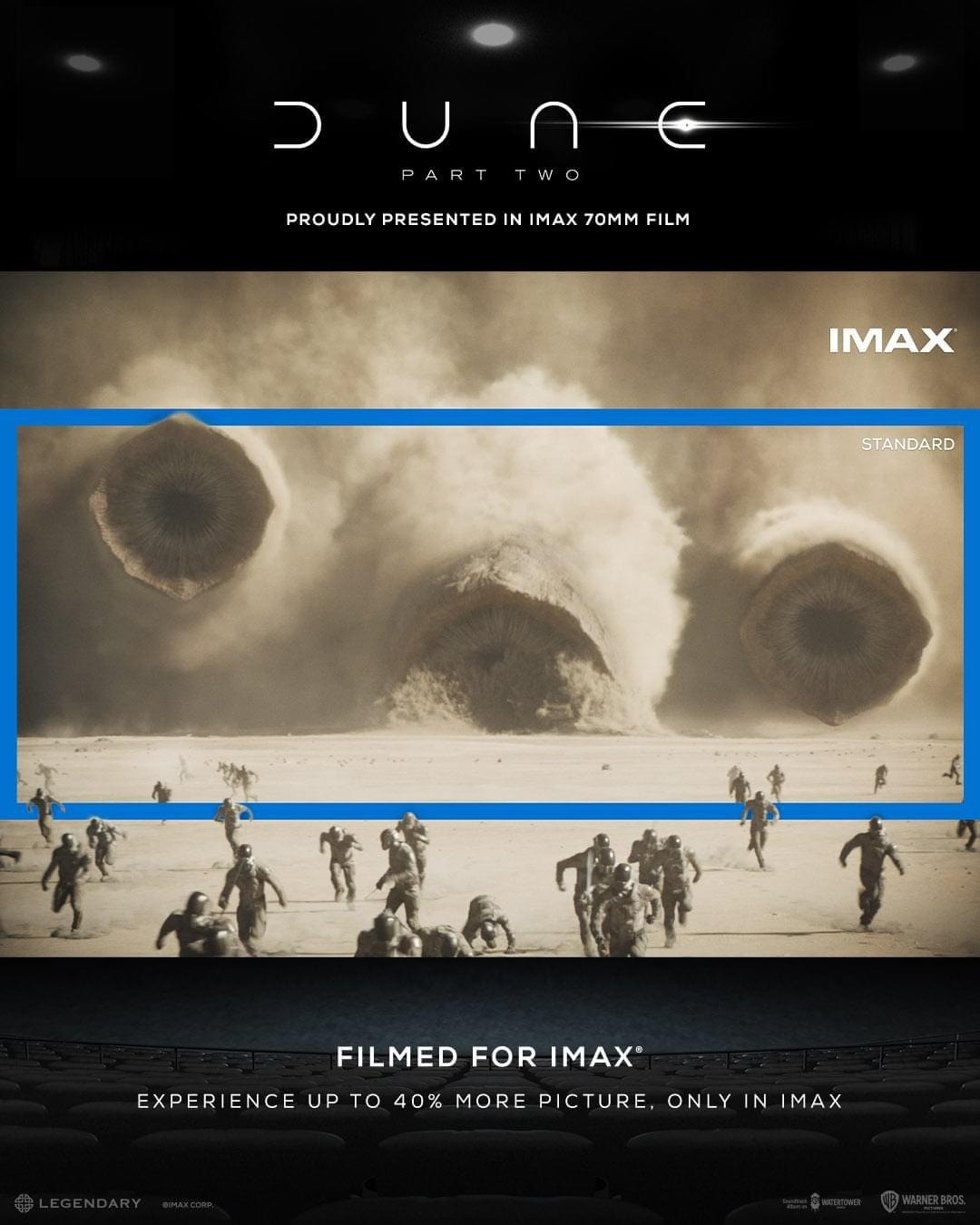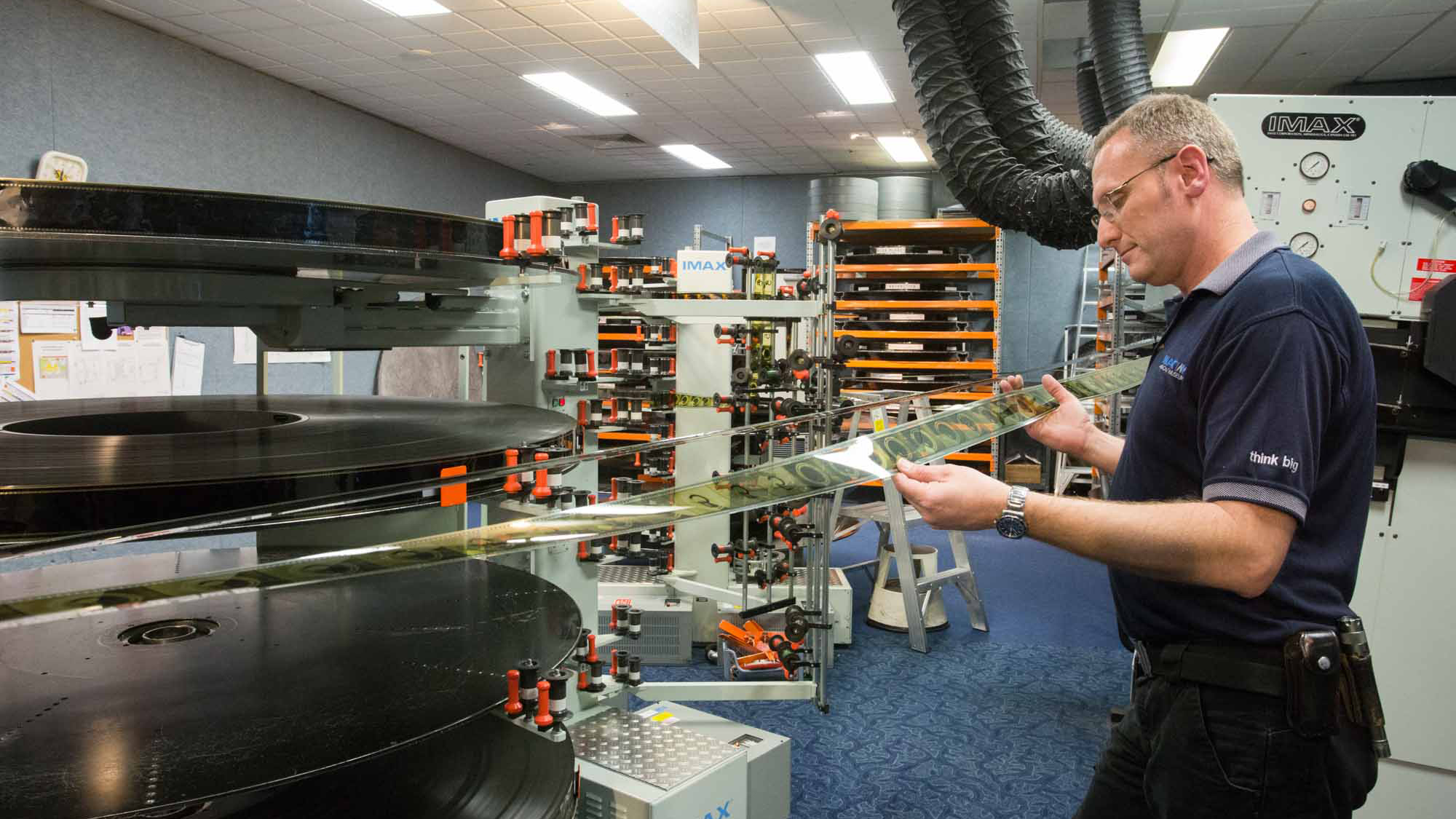
Having counted Denis Villeneuve's first Dune as my top film of 2020, I had some truly astronomical expectations going into its follow-up, Dune: Part Two, and I'm happy to report that it absolutely exceeded them.
Of course, part of my enthusiasm comes from finally seeing the world of Arrakis on the big screen — as the first film came out during the initial Covid outbreak, I've only ever seen it at home.
While I did make the best of the situation with a fairly large 8K TV and one of the best Dolby Atmos soundbars you can buy, Dune is a showcase for the kind of epic filmmaking that demands to be seen on the biggest screen possible — and that's exactly what I got at an advanced preview screening of its highly anticipated sequel at the new IMAX theater in Sydney, Australia.
Now that I've seen Dune: Part Two on the third-largest IMAX screen in the world (following Leonberg, Germany and Melbourne, Australia), I'm confident that its large format IMAX presentation is the definitive way to see the film. Here's why.
You see much more of the picture in IMAX
While the first Dune film's IMAX presentation jumped between standard cinemascope 2.39:1 and the larger 1.43:1 format (or 1.90:1 in IMAX digital theaters), Dune: Part Two was shot entirely in the IMAX format, switching between the very tall 1.43:1 aspect ratio, and the shorter (but still taller than normal) 1.90:1 ratio.
That means that unless you see the Dune sequel in an IMAX theater, you'll be getting a cropped 2.39:1 presentation of the movie, losing out on a significant portion of each frame.
As per the IMAX Melbourne website, roughly 40 minutes of Dune: Part Two is presented in the full 1.43 aspect ratio, with the remainder of the film shown in 1.90.
During my screening of the film, I took note of the expanded aspect ratio during the film's grander moments — from the great Sandworm-riding scene that was teased in a recent extended preview, to the explosive finale.

Unsurprisingly, it looked fantastic, with an incredible sense of scale and exceptional clarity. That said, it would be remiss of us not to mention that there has been some controversy among videophiles around Dune: Part Two's 1.43 presentation.
Based on the film's promotional material, some eagle-eyed viewers have spotted certain shots which appear to be cropped in from the 1.90 version, meaning you aren't necessarily getting the whole picture, which is one of IMAX's biggest selling points.
It's also worth noting that much of this discourse is based on speculation and assumption — I certainly didn't feel like I was missing out on anything while watching the film. In fact, I was too busy picking my jaw up from the floor.
In other words, given how much of Dune: Part Two takes advantage of the entire IMAX screen, you'd simply be missing out on seeing the most spectacular version of the film if you see it at a regular multiplex in its most cropped form.
Not all IMAX versions are the same
Of course, it's worth noting that not every IMAX presentation of Dune: Part Two is the same — outside of less common IMAX Dome 'Omnimax' theaters, chances are IMAX audiences will either be shown the digitally-projected 4K Dual Laser version with 12-channel audio, or the IMAX 1570 Film projected version with 6-channel audio.
4K Dual Laser, which is the version I saw, is the most common IMAX presentation of Dune: Part Two, offering outstanding color, brightness and contrast, along with a superior audio presentation.
Although Dune: Part Two was shot digitally at resolutions up to 6.5K, it was finished and mastered at 4K. However, pixels projected onto a cinema screen aren't the same as the ones on your television, where pixel density is much tighter. With projection, you still have to factor in the size of the screen and the distance of the thrown image. The larger this is, the more spread out the image becomes.

Meanwhile, IMAX 1570 Film is a special film format in which frames are printed onto a 70mm film reel horizontally instead of vertically. The '15' in 1570 refers to the number of perforations (or holes) on the sides of each frame, which are used to feed a film print into a projector.
Taking into consideration that a standard 70mm film reel has around 5 perorations on each side of a frame when printed vertically, the horizontal 15 perforation method is essentially like having the three regular 70mm frames stacked next to each other to make up one frame.
Because of this, IMAX 1570 Film is considered by most videophiles to be the best IMAX format from a visual standpoint, in that offers images equivalent to 18K resolution, as well as warmer colors and a more natural appearance.
Which version of Dune: Part Two should you see?
If you have access to an IMAX with 1570 Film capabilities, you practically owe it to yourself to see Dune: Part Two this way. And if you don't, rest assured that the 4K Dual Laser version of the film is also an astonishing sight to behold.
In my humble opinion, Denis Villeneuve's Dune franchise is the closest that modern films get to reaching the epic heights of something like Lawrence of Arabia — films with the grand-scale storytelling and score to earn themselves 'event film' status.
If any movie were to inspire you to leave your house and visit a movie theater, it would be this one, so if you are planning to do so, we wholeheartedly recommend you see it at IMAX — the way it was intended.







